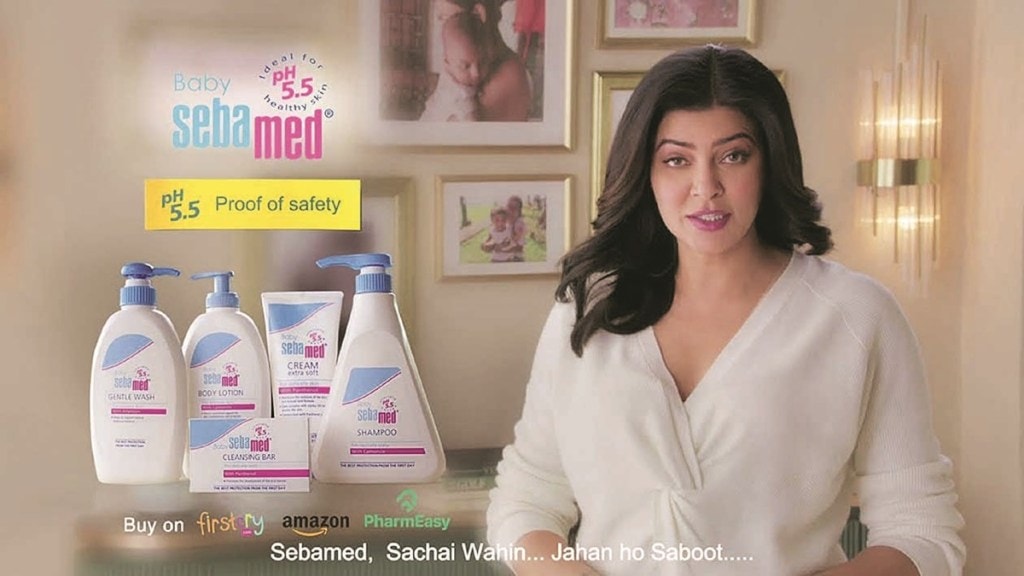German personal care major Sebamed made headlines early last year when, in an audacious move, it took on Hindustan Unilever’s (HUL) legacy soap brands in its advertising campaign. Though the campaign was embroiled in a legal brawl and triggered debates across the industry, Shashi Ranjan, country manager at Sebamed India, clarifies that the campaign was never meant to be an off-the-cuff one, but rather “in sync with the company’s purpose of helping consumers make an informed choice.” Since then, Sebamed has rolled out a series of campaigns for its range of products in baby care, skin and hair care. Ranjan expects Sebamed, which operates in a more premium space, to grow tenfold in the next five years and earn a spot among the top 10 players in the sector.
Baby steps
The brand was initially distributed through the pharmacy and medical store route when it launched in 2007 in India. But things have evolved. “We started expanding our distribution to general trade, modern trade and e-commerce, and gradually widened our footprint,” notes Ranjan. The brand is currently present in more than 60 cities, and expects to reach the 100 cities-mark by the end of 2022. “We have a direct reach of 60,000 stores and plan to increase this number twice every year,” Ranjan adds. Pharmacies now account for only around 20% of Sebamed’s business.
“The endorsement of our products by doctors and dermatologists proved to be a good strategy, and helped the brand stand the test of time,” explains Ranjan. The second phase of growth for the brand started three years ago. He adds, “In this phase, we are focussing primarily on three pillars— brand building, distribution and people.”
On the brand building front, Ranjan says the brand has tripled its marketing budget in the last three years, and its campaigns have seen positive consumer response. Sebamed’s annual revenue is at `600 crore. The company’s baby care portfolio has seen double digit growth, shares Ranjan. The baby care segment (specifically toiletries such as soaps, wipes, lotions and diapers) is also witnessing exponential growth, observes Sanjesh Thakur, partner, Deloitte India. “Assuming the next five years are normal, this category, currently at `14,000-15,000 crore, should be at `25,000-26,000 crore by 2027, growing at a CAGR of 12-13%,” he observes.
The company did well to stand out in a cluttered segment using the chemist distribution approach, says Harish Bijoor, founder, Harish Bijoor Consults. “Now that it has joined the FMCG route to expand, it is important to invest in the power of selling-in with deep investments in manpower building, training of the sales force, and in automated systems that sell at the front-end,” he adds. This is where Sebamed’s ‘third pillar’ will come into play, says Ranjan, as the brand aims to invest in the right people.
The cost factor
During the pandemic, consumers began to revisit their choices in beauty and personal care, paying more attention to ingredients and safety. This is where a brand such as Sebamed may have scored with its “transparent communication strategy and its 5.5 pH balance promise,” notes Ranjan.
Harsha Razdan, partner and head, consumer markets and internet business, KPMG India, also observes that the recent generational shift among young consumers has been a key growth driver for the personal care segment. “Innovation with packaging, and safe, clean products containing ethical ingredients with minimal chemicals are the main drivers for purchase decisions in this category,” he says.
Deloitte’s Thakur points out that while young consumers in India are keen to experiment with different brands, pricing strategy remains critical, especially for brands that operate in a more premium space. “Why will a consumer spend more for a premium product when he’s perfectly happy with a good quality purchase at a lower price point?” he asks.
As a premium brand, pricing is perhaps one of Sebamed’s key impediments when it comes to growing its market share. A Sebamed soap bar costs at least twice as much as several popular brands in the market. However, Ranjan asserts that the brand is determined to do everything it can to induce trials. It has therefore launched smaller sized variants such as 50 ml lotion packs and `10 shampoo sachets to overcome the price barrier, and widen its reach in smaller markets.

